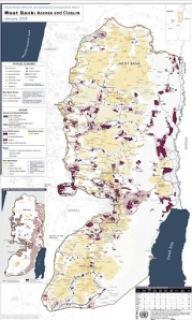<!–[if !mso]> st1\:*{behavior:url(#ieooui) } <![endif]–>
st1\:*{behavior:url(#ieooui) } <![endif]–>
<!–[if !mso]> st1\:*{behavior:url(#ieooui) } <![endif]–>
st1\:*{behavior:url(#ieooui) } <![endif]–>
Brief Introduction to the Book – Daniel was taken into captivity in the summer of 605BC while Jehoiachim son of Josiah was king of Judah some time after the Babylonians defeated the Egyptians at Carchemish. Jehoiachim had actually been placed upon the throne by Egypt and thus it seemed only fitting that the defeat of the Egyptians spelled the defeat of Judah. Nebuchadnezzar, son of Nabopolassar, was officially made king of Babylon later that summer upon the death of his father (Miller 56). Daniel and his friends were among those initially taken and he survived until some time after the Babylonian captivity ended with the defeat of the Babylonians by the Perians in 539BC. The book of Daniel was included in the Hebrew canon among the writings because he does not belong particularly to the prophets (as in the LXX canon and our own), but this does not mean the book was regarded as non-prophetic. Daniel contains several additions in the Catholic canon (Song of the Three, Susanna, Bel and the Dragon; and in the original KJV[!]), but this was not received into the Protestant canon of Scripture (these will be briefly discussed at the conclusion of this series). Many reject Daniel as being written in the 6th century and instead date it to the Maccabean period (250-167BC), but Archer (421-448) Baldwin (14-80), Walvoord (11-25), and Miller (22-41) have argued rather persuasively for a 6th century date of authorship perhaps shortly after the date of the Babylonian exile in 539BC. The book has been variously divided between the Hebrew sections (Dan.1:1-2:4a; 8:1-12:13) and Aramaic section (Dan.2:4b-7:28), but the most helpful distinction is between the stories (Dan.1-6) and the visions (Dan.7-12). “This biblical witness challenges the faithful to be awake for the unexpected intervention of God in wrapping up all of human history. The stories of Daniel and his friends picture men who bear eloquent testimony is both word and deed to an unswerving hope in God’s rule. As a consequence, they were made free to hang loosely on the world because they knew their hope rested elsewhere” (Childs 622).
1:1-2 – The beginning of captivity. The time note that Daniel provides refers to the year 605BC and though there are no records of any actual siege of Jerusalem, it is not necessary that Jerusalem was laid siege so much as taken captive in that year. Nebuchadnezzar is called “king” because either it refers to his functioning role in the very end of his father’s reign or because it refers to him this way as one who later was king of Babylon. Who is emphasized as responsible for the victory of Nebuchadnezzar over Jerusalem and what is the significance in relation to the book of Daniel? The Lord rules all the nations…great and small. The “temple articles” were promised to be taken to Babylon because of the sin of Hezekiah in showing the Babylonians his treasures (cf. 2 Chron.36:7, 10, 18, 20-23; Isa.39:2, 4, 6; Ezra 1:7-11 and comes into play later in Daniel 5:2-4). Literally, the articles were carried off to “Shinar” (cf. Gen.10:10) which was an ancient name of a city recognized to be a place of opposition to God (Gen.11:1-9; Zech.5:11). What is the significance of putting the articles of the temple of God into the temple of Nebuchadnezzar’s gods? (cf. 1 Sam.4-5) “To all appearances, the God of Jerusalem has been defeated by the gods of Babylon” (Goldingay 21), but Daniel will point in a radically different direction.
1:3-7 – The training of the best of the young exiles. The descriptions of those who were to be trained were that they were taken from the best families (royal and/or nobility; cf. Isa.39:7) and of fine appearance and high aptitude. The terms used are those of the wisdom literature (cf. Prov.1:1-6) with regard to the acumen of these young men (Heb. yělādîm which “covers men from birth to marriage” – Goldingay 5). The literature and language of the “Babylonians” (lit. “Chaldeans” Heb. kaśdîm, Aram. kaśdāy) included magical, astrological, medicinal, temple, wisdom, and legal texts among others. How could Daniel and his friends spend three years of intensive training in such things and yet remain true to the LORD? John Goldingay astutely notes that the “wise person knows how to learn from the wisdom of other peoples without being overcome by it” (24). The food and wine they were assigned came directly from the king’s table and thus was luxurious but would also have been offered to the god/s of the king (cf. Oppenheim 188-92) before they received it. Four of the chosen young men are named as particularly faithful and deserving of mention: Daniel (“God is my judge”; became Belteshazzar “Bel, protect his life!”), Hananiah (“The LORD has been gracious”; became Shadrach “Command of Aku” the moon god), Mishael (“Who is what God is?”; became Meshach “Who is what Aku is?”), and Azariah (“The LORD has helped”; became Abednego “Servant of Nebo” the god of Nebuchadnezzar’s namesake) – on name changes see Gen. 41:45; Esther 2:7. Why were their names changed and why did they not protest this and the learning of the Chaldeans, but did protest the diet that follows?
1:8-16 – The ten day test of food and faith. What might have been Daniel and his friend’s motivation for refusing the food and wine of Nebuchadnezzar and choosing to have “vegetables” (technically refers to “vegetables, grain, and non-mean products generally” Goldingay 6) and water instead? One suggestion has been that they were not “kosher” (cf. Lev.11, 17) and thus would “defile” them, but this would only pertain to meats and not to wine. As was previously mentioned it had been offered to the god/s (cf. 1 Cor.8-10; Rom.14), but so would the “vegetables” have been (cf. Bel and the Dragon 3; Oppenheim 192; those who denied consuming e
ven the “vegetables” for this reason: cf. Judith 10:5; 12:2; Add. Esther 14:17; Tobit 1:10-11). It is also notable that Jehoiachin was recorded to have eaten daily at the kings table according to 2 Kings 25:29. Goldingay proposes that they refused as symbols of “avoiding assimilation” (19). They had taken the names, learned the wisdom, worn the clothes and by outward appearances become “Babylonians”, but they would hold this one thing as to the LORD. Though Daniel’s request found favor with the chief official, the official was too afraid to grant it directly so the “guard” (or more properly the one given direct responsibility over them) exchanged portions with them thus relieving the chief official of responsibility. This act of Daniel and his friends was an outright act of faith on their part. At the end of the ten days they were found to be in much better appearance than the rest of those who ate the royal food so they were permitted to continue with their diet of faith. This is not in any way offered as a vegetarian command since the Law specifically commanded certain sacrifices of meat to be made and eaten every year (though the temple was destroyed at this time and thus the sacrifices could not be made then). “Even a small act of self-discipline, taken out of loyalty to principle, sets God’s servants in the line of his approval and blessing. In this way actions attest faith, and character is strengthened to face more difficult situations in the future” (Baldwin 92-3).
1:17-21 – An insight into the end before getting to the end. It is stated the God Himself gave the four young men understanding of all the things they were studying during their three years of Babylonian tutelage. How might this be understood in light of the contents of what they studied? What relation does God’s wisdom and knowledge have to the world’s? It is specifically noted that Daniel was blessed with being able to understand and interpret dreams (cf. Num.12:6) which comes into play later in the book (though it is not something inherent to him, but something he still prays and seeks). When they finally made their appearance before the king it was noticeable that these four far surpassed all the others, but they would still have opportunities to demonstrate the superiority of their God. The note in verse 21 concerning King Cyrus (see the prophecy in Isa.44:24-45:7) maintains that while Daniel when into captivity he lived to see the end of it under the Persians (cf. Deut.30:3-5; the “seventy years” of Jer.25:12).
Bibliography
Archer, Gleason. “Daniel,” A Survey of Old Testament Introduction. Chicago,
IL: Moody Press, 1994. pp. 421-448.
Baldwin, Joyce G. Daniel. Tyndale Old Testament Commentaries vol. 23,
Downers Grove, IL: Inter Varsity Press, 1978.
Childs, Brevard S. “Daniel,” An Introduction to the Old Testament as Scripture.
Philadelphia, PA: Augsburg Fortress Press, 1979. pp. 608-623.
Goldingay, John. Daniel. Word Biblical Commentary vol. 30, Nashville, TN:
Thomas Nelson Publishers, 1989.
Miller, Stephen R. Daniel. The New American Commentary vol. 18, Nashville,
TN: B&H Publishing, 1994.
Oppenheim, A. Leo. Ancient Mesopotamia: Portrait of a Dead Civilization.
Chicago, IL: University of Chicago Press, 1977.
Walvoord, John F. Daniel: The Key to Prophetic Revelation. Chicago, IL: Moody
Press, 1971.
 st1\:*{behavior:url(#ieooui) } <![endif]–>
st1\:*{behavior:url(#ieooui) } <![endif]–>  st1\:*{behavior:url(#ieooui) } <![endif]–>
st1\:*{behavior:url(#ieooui) } <![endif]–> 





